Japanese artist Azuma Makoto investigates the lifecycle of blossoms with two amazing botanical sculptures exhibited in the Oi Futuro museum in Rio de Janeiro, Brazil. The figurative work evokes the Buddhist worth of contemplating life and death. Viewers are invited to reflect on the transience of all living things, as the colorful flowers gradually decay with time. As such, his artwork installations pose a rare chance to experience all of it.
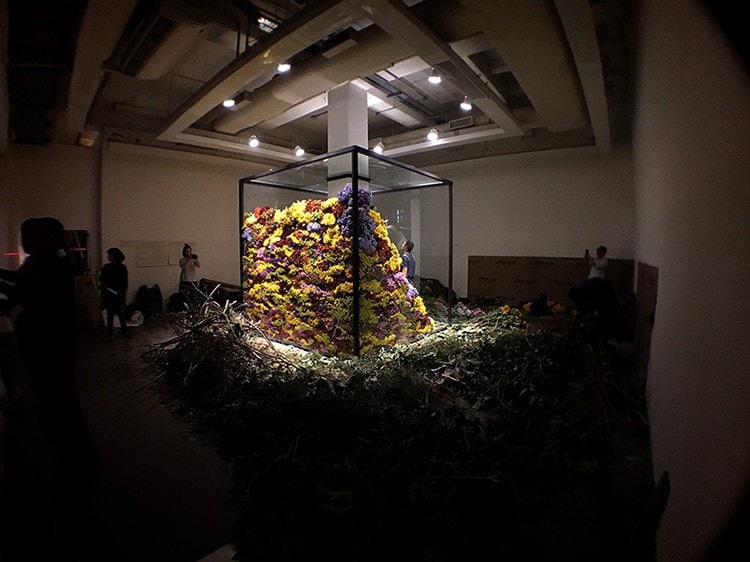
The first piece from the project, qualified Gaibu-Outside, is composed of neatly cut flowers situated outside the museum. Initially, the installation looks like a gigantic woven carpet, with every flower carefully positioned to overlap with those before it. As the viewer comes nearer, they could inspect the particulars of Makoto’s “reverse agriculture.”
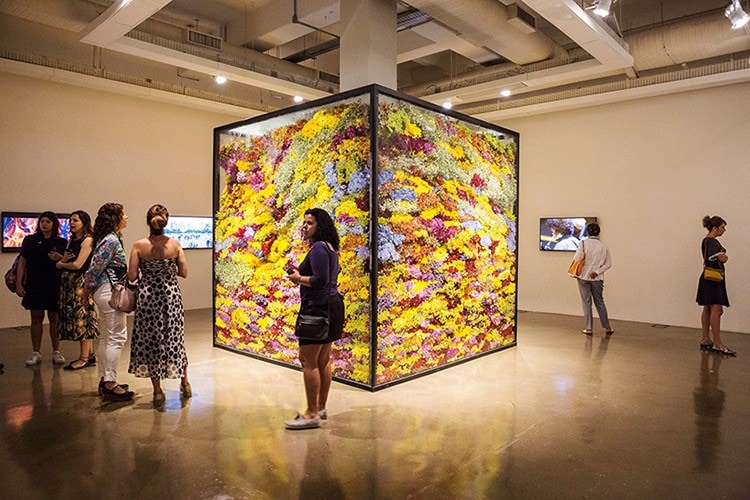
The next half of the project, qualified Naibu-Inside, follows the same concept but presents it in another manner. Colorful flowers are assembled in a huge glass block in the center of the indoor exhibition space. Visitors can approach the cube and examine the attractiveness of decaying flowers up close. As the flowers gradually waste away, the colors fade and the leaves and blossom wilt into dust.
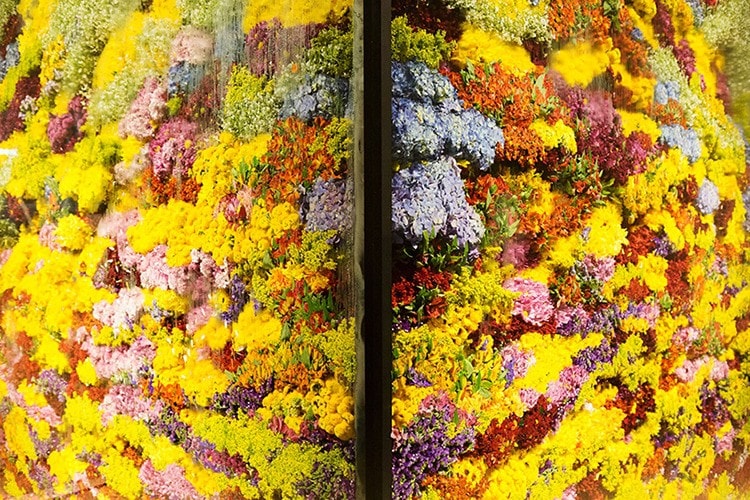
Makoto’s floral experiments even extend beyond earth’s atmosphere. In August 2017, he sent bouquets of flowers into space to record what happened to them. He explains that the purpose was to capture the “ever-changing landscape of the blossoms, the changes in contrast and lighting in the direct rays from the sun, the ways in the which the flowers will react in an environment of -60°C, and the manner by which they will scatter and drop back into the ground.”
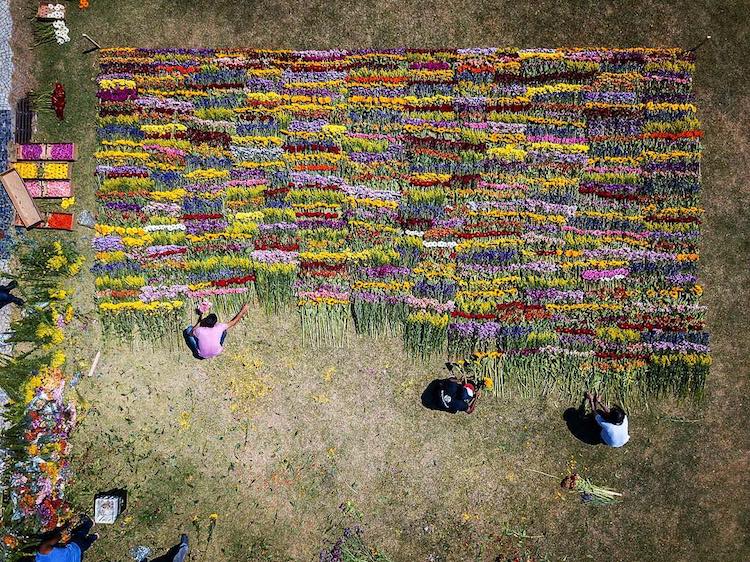
Azuma Makoto‘s latest project explores the cycle of death and life with a series of decaying flower art installations.
More info: Website | Instagram | Facebook | Tumblr
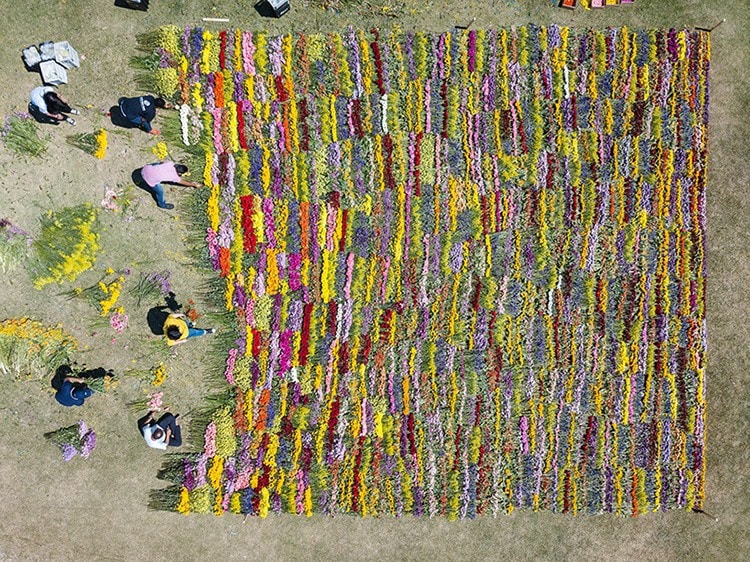
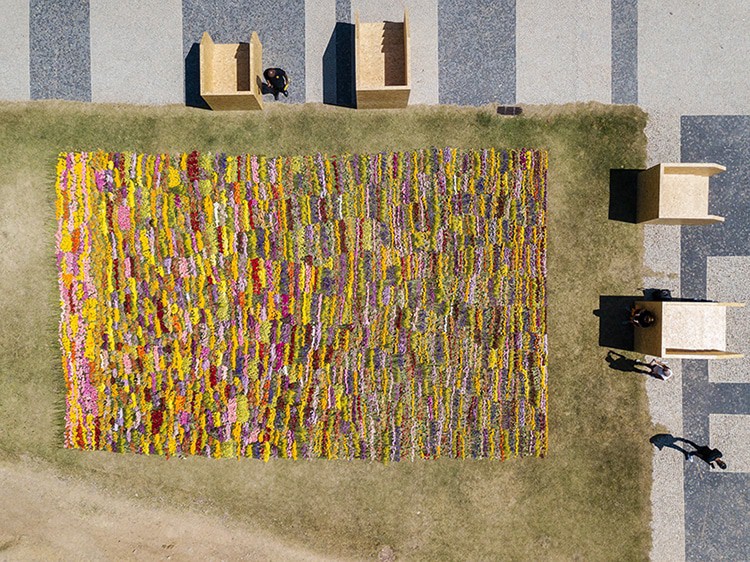
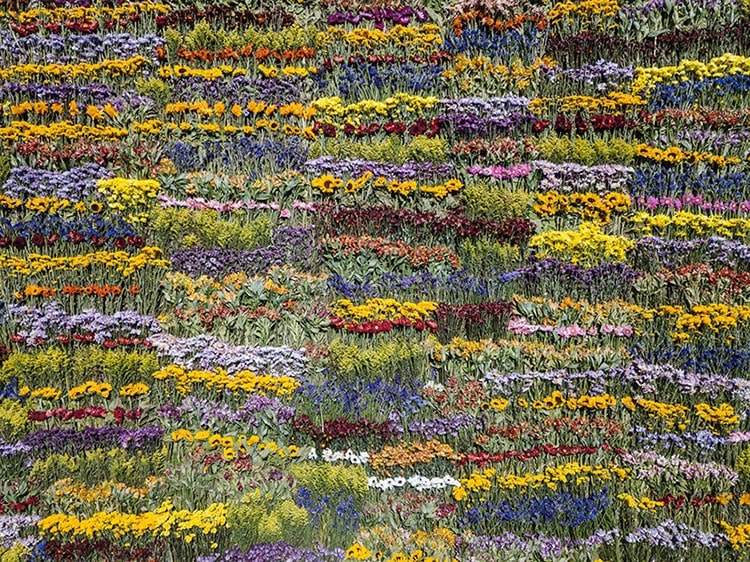

h/t: this isn’t happiness
No comments:
Post a Comment